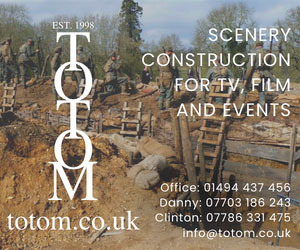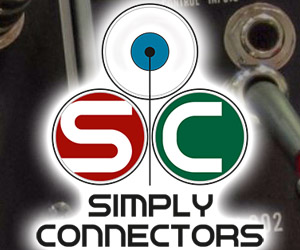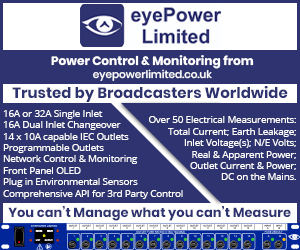Broadcast News
14/06/2017
The Importance Of Waveform Monitoring In HDR Production

Regardless of whether they are working with HD or 4K, one of the dawning realities to many embarking on their first HDR production is the need for appropriate HDR waveform monitoring at every stage in the production process to correctly preserve both the SDR content and the HDR content.
If we assume that the HDR production process will use one of the many HDR workflow solutions offered by industry players and focus on the different stages in any production process and what we need to be looking for.
When capturing material for HDR production there are many challenges. In some situations, there may not be an HDR display that can actually show what the camera is actually capable of capturing. And if there is a reasonable HDR display, the effect of ambient light on screen may have negative impact on human perception of brightness. This in turn can could make the HDR image capture subjective instead of objective. So, to correctly light a scene for capture you need a reference that can follow the content throughout its journey to the viewer. Many choose a test card or tools such as SpyderCUBE to provide reference levels for black, 80%, white and spectral elements in the image. The only real way of ensuring that these levels are captured correctly is to use a waveform monitor with corresponding HDR NITs graticules.
Once you have correctly lit the scene, then next challenge is how to record the image. Many cameras can record RAW data or output an SDI stream with a HLG, PQ (HDR10 / SMPTE ST2084 EOTF) OETF or proprietary HDR curve (such as Sony S-Log) already applied. The choice that is made here is often based on the capabilities of the camera and how you get the capture image to the next stage in the HDR production.
Depending on how you need to transfer the captured image to the studio or editing suite, you may have to convert between different HDR standards and cope with encoding to transmit content via satellite link. Both before and after any conversion or encoding you will need to check that the SDR and HDR levels are correct. Here the subjective decision made from a monitor display is not good enough and the only safe way is to use an HDR waveform monitor. It is common practice to locally decode and monitor an encoded feed in an uplink truck, the only difference with HDR production is the ability to correctly measure HDR levels (from the test chart or SpyderCUBE) prior to transmission.
Checking may also need to be performed when the feed is received by the studio and before it is ingested into a production server.
When editing and grading the captured content, the decision about output format may already be defined. Once again, the issues of limited HDR displays, ambient lighting human perception need to be complemented by HDR waveform monitoring to ensure that what you think you are seeing is correct. These challenges may be compounded by having to cross grade between HLG and PQ content depending on whether content is being transmitted terrestrially, via cable, satellite or OTT.
The HDR program being produced not only includes the captured image content, but other elements such as graphics, titles, straps, etc., which are created by other systems and may be automatically inserted into the program. Care is required here to ensure that the levels of the components do not compromise the program. As part of the QC on any HDR program it is necessary to ensure that all aspects of the content are correct for transmission to the viewer. Here again to only safe way is to view and monitor the content with an HDR waveform monitor. For QC other tools such as gamut monitoring and Omnitek's O-Zone false colour displays can also help.
At all stages in production, the waveform monitor needs to provide the appropriate profile SDR and HDR NITs graticules and corresponding profile to measure the reference levels of content captured as HLG, PQ, S-Log, etc.
The Ultra TQ has been developed specifically to meet the challenges throughout the HDR production process and the Ultra XR has been developed to meet the very specific needs of 4K/UHD HDR production, grading and QC.
The Ultra TQ supports analysis and generation of all SD, HD and 3G-SDI formats as standard with an upgrade path to 4K/UHD if needed, by customers, in the future and supports SDR, HDR and WCG.
Article by Alan Wheable FISTC, MITOL – Communications Manager at Omnitek.
www.omnitek.tv
This article is also available to read in the latest edition of Broadcast Film & Video here, page 10.
(JP/LM)
If we assume that the HDR production process will use one of the many HDR workflow solutions offered by industry players and focus on the different stages in any production process and what we need to be looking for.
When capturing material for HDR production there are many challenges. In some situations, there may not be an HDR display that can actually show what the camera is actually capable of capturing. And if there is a reasonable HDR display, the effect of ambient light on screen may have negative impact on human perception of brightness. This in turn can could make the HDR image capture subjective instead of objective. So, to correctly light a scene for capture you need a reference that can follow the content throughout its journey to the viewer. Many choose a test card or tools such as SpyderCUBE to provide reference levels for black, 80%, white and spectral elements in the image. The only real way of ensuring that these levels are captured correctly is to use a waveform monitor with corresponding HDR NITs graticules.
Once you have correctly lit the scene, then next challenge is how to record the image. Many cameras can record RAW data or output an SDI stream with a HLG, PQ (HDR10 / SMPTE ST2084 EOTF) OETF or proprietary HDR curve (such as Sony S-Log) already applied. The choice that is made here is often based on the capabilities of the camera and how you get the capture image to the next stage in the HDR production.
Depending on how you need to transfer the captured image to the studio or editing suite, you may have to convert between different HDR standards and cope with encoding to transmit content via satellite link. Both before and after any conversion or encoding you will need to check that the SDR and HDR levels are correct. Here the subjective decision made from a monitor display is not good enough and the only safe way is to use an HDR waveform monitor. It is common practice to locally decode and monitor an encoded feed in an uplink truck, the only difference with HDR production is the ability to correctly measure HDR levels (from the test chart or SpyderCUBE) prior to transmission.
Checking may also need to be performed when the feed is received by the studio and before it is ingested into a production server.
When editing and grading the captured content, the decision about output format may already be defined. Once again, the issues of limited HDR displays, ambient lighting human perception need to be complemented by HDR waveform monitoring to ensure that what you think you are seeing is correct. These challenges may be compounded by having to cross grade between HLG and PQ content depending on whether content is being transmitted terrestrially, via cable, satellite or OTT.
The HDR program being produced not only includes the captured image content, but other elements such as graphics, titles, straps, etc., which are created by other systems and may be automatically inserted into the program. Care is required here to ensure that the levels of the components do not compromise the program. As part of the QC on any HDR program it is necessary to ensure that all aspects of the content are correct for transmission to the viewer. Here again to only safe way is to view and monitor the content with an HDR waveform monitor. For QC other tools such as gamut monitoring and Omnitek's O-Zone false colour displays can also help.
At all stages in production, the waveform monitor needs to provide the appropriate profile SDR and HDR NITs graticules and corresponding profile to measure the reference levels of content captured as HLG, PQ, S-Log, etc.
The Ultra TQ has been developed specifically to meet the challenges throughout the HDR production process and the Ultra XR has been developed to meet the very specific needs of 4K/UHD HDR production, grading and QC.
The Ultra TQ supports analysis and generation of all SD, HD and 3G-SDI formats as standard with an upgrade path to 4K/UHD if needed, by customers, in the future and supports SDR, HDR and WCG.
Article by Alan Wheable FISTC, MITOL – Communications Manager at Omnitek.
www.omnitek.tv
This article is also available to read in the latest edition of Broadcast Film & Video here, page 10.
(JP/LM)
More Content Management Stories
01/04/2019
Rohde & Schwarz To Present R&S PRISMON A/V Monitoring And IP Baseband Multiviewer Solutions
Rohde & Schwarz is to present its latest R&S PRISMON A/V monitoring and IP baseband multiviewer solutions at NAB 2019. The firm will present its field
Rohde & Schwarz To Present R&S PRISMON A/V Monitoring And IP Baseband Multiviewer Solutions
Rohde & Schwarz is to present its latest R&S PRISMON A/V monitoring and IP baseband multiviewer solutions at NAB 2019. The firm will present its field
27/09/2018
Introducing Cosmos Technology Broadcast Systems Ltd
TV as content will never go away, but its format and devices are constantly changing. As TV becomes more digitized and smart, the line between TV and
Introducing Cosmos Technology Broadcast Systems Ltd
TV as content will never go away, but its format and devices are constantly changing. As TV becomes more digitized and smart, the line between TV and
15/05/2018
Cutting Edge Technology And Innovative Solutions Unveiled At NAB 2018
Despite temperatures soaring to 30 degrees in Las Vegas, a record number of visitors attended the world's largest convention which encompasses the con
Cutting Edge Technology And Innovative Solutions Unveiled At NAB 2018
Despite temperatures soaring to 30 degrees in Las Vegas, a record number of visitors attended the world's largest convention which encompasses the con
11/04/2018
DRILLARIUM: Large Scale Playout
The current broadcast environment requires hundreds of channels to be supervised by a single operator. Vector 3 has created DRILLARIUM, the tool for t
DRILLARIUM: Large Scale Playout
The current broadcast environment requires hundreds of channels to be supervised by a single operator. Vector 3 has created DRILLARIUM, the tool for t
06/04/2018
Chart Your Future With PROVYS Scheduling
As every ship's captain recognises, it is very important to know exactly where we are heading, together with how, when and at what cost. Successful na
Chart Your Future With PROVYS Scheduling
As every ship's captain recognises, it is very important to know exactly where we are heading, together with how, when and at what cost. Successful na
07/03/2018
PlayBox Technology To Demonstrate Latest Advances At NAB
PlayBox Technology will exhibit the latest advances to its Neo and CloudAir broadcast channel branding and playout solutions at the NAB Show (07-12 Ap
PlayBox Technology To Demonstrate Latest Advances At NAB
PlayBox Technology will exhibit the latest advances to its Neo and CloudAir broadcast channel branding and playout solutions at the NAB Show (07-12 Ap
12/02/2018
SWISS TXT Revolutionises Live Subtitling Market With SaaS Solution
SWISS TXT has revolutionised the live subtitling market with an SaaS solution. The service was first used for MTG TV Norway at the European Handball C
SWISS TXT Revolutionises Live Subtitling Market With SaaS Solution
SWISS TXT has revolutionised the live subtitling market with an SaaS solution. The service was first used for MTG TV Norway at the European Handball C
24/11/2017
PlayBox Technology Neo Powers New HD Channel at main.tv
main.tv, one of Bavaria's leading regional broadcasters, has chosen PlayBox Technology Neo as the core playout system for its new high definition tele
PlayBox Technology Neo Powers New HD Channel at main.tv
main.tv, one of Bavaria's leading regional broadcasters, has chosen PlayBox Technology Neo as the core playout system for its new high definition tele
23/08/2017
Cloud And AI To Scare The Industry At IBC Again
Everyone knows about penetration by IT technologies in the sphere of broadcast engineering. Although the IT and engineering campuses are still poles a
Cloud And AI To Scare The Industry At IBC Again
Everyone knows about penetration by IT technologies in the sphere of broadcast engineering. Although the IT and engineering campuses are still poles a
23/08/2017
Workflows Need To Change To Unlock The Benefits of IP
The primary advantage of an IP-based system is the convergence of multiple signal formats onto a comprehensive, distributed IP switch fabric that seam
Workflows Need To Change To Unlock The Benefits of IP
The primary advantage of an IP-based system is the convergence of multiple signal formats onto a comprehensive, distributed IP switch fabric that seam















